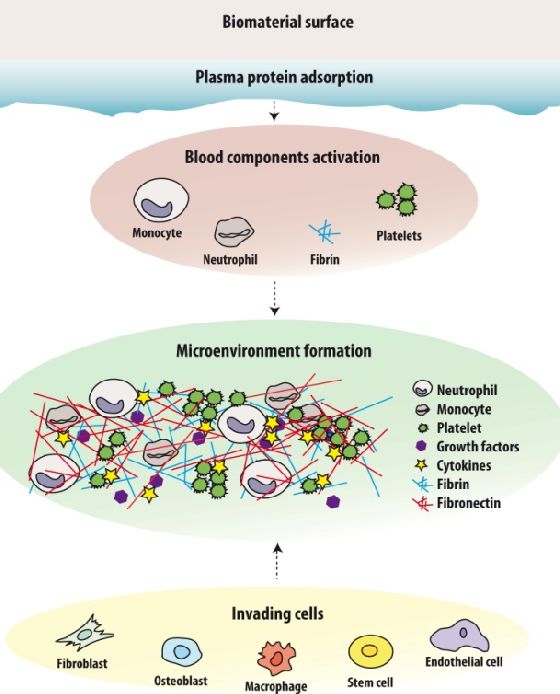|
| Material-cell interaction engineering | ||
During surgery, most implants get immediately exposed to blood and body fluids. It has been long accepted that protein adsorption is the first step in the acute biological response to biomaterial surfaces, blood components will interact with the adsorbed proteins to subsequently trigger blood activation including the coagulation cascade, platelet activation, leukocyte activation or complement system activation, creating a specific micro-environment for cells and impact their subsequent tissue assembly and ultimately tissue regeneration (Figure 1). Protein adsorption, blood activation and overall biological response are very much dependent on the surface properties of the biomaterial. Recently, our industrial partners, Qvanteq AG, developed a novel surface treatment to reduce in-stent stenosis, which renders the surface highly hydrophilic. The new stents were shown to perform significantly better (reduce in-stent stenosis) when compared to native state-of-the-art stents, during in vivo experiments (Figure 2). Our focus is to understand how surface properties affect the initial protein adsorption and blood activation, altering subsequent tissue healing. Therefore, we are currently performing protein adsorption and blood compatibility assays of engineered surface. Interestingly, minor chemical changes in the surface composition can lead to drastic changes in protein adsorption or blood component adhesion/activation (Figure 3). On the long run, we aim at correlating chemical properties of engineered surfaces with the biological responses they trigger, in order to develop a next generation of biomedical implants with better performances. |
 Figure 1  Figure 2  Figure 3 |
|








